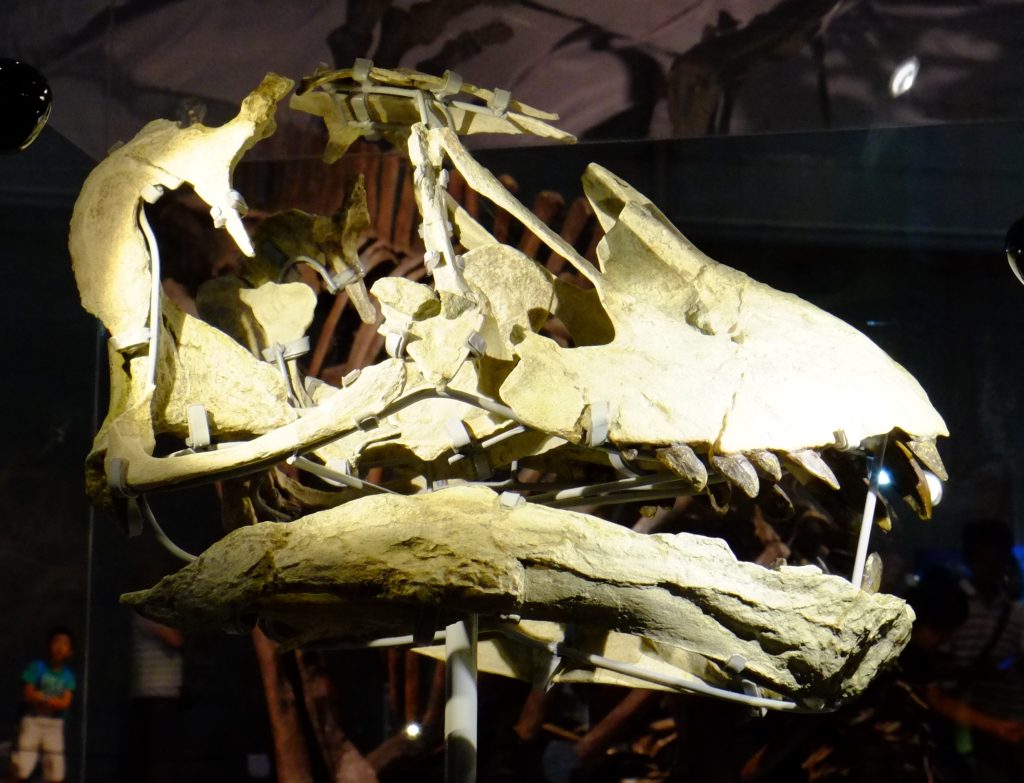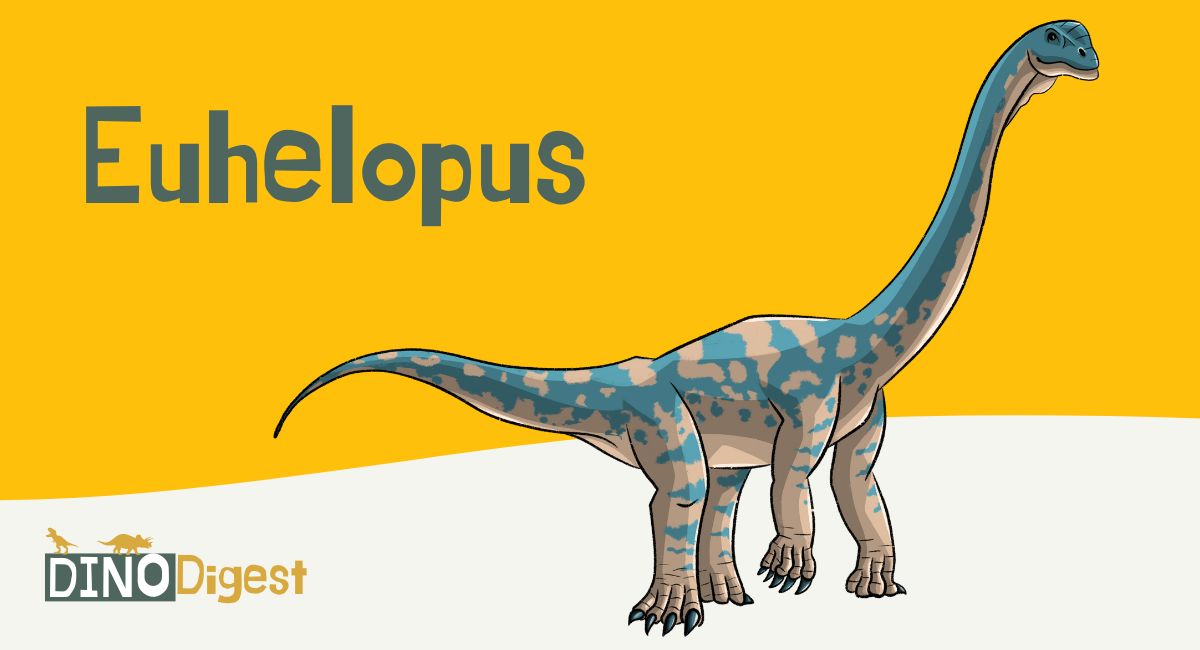The Euheolpus was a long-necked sauropod that lived in China during the Jurassic and Cretaceous times. They used their long, slender necks as full-time herbivores to pluck the leaves off tall trees. Even though their diets were plant-based, these colossal sauropods were large and in charge. They were like giant school buses roaming planet Earth!
Table of Contents
Some Quick Facts About the Euhelopus

| Name | Euhelopus (meaning “True Marsh Foot”) |
| Type of dinosaur | Sauropod |
| Territory | Marshy swampland, grasslands, China |
| Size | 40 feet long, 16 feet tall |
| Color | Brownish, stripes |
| Interesting Characteristics | Long neck and long tail |
| Diet | The leaves from tall trees |
| Major Threats | Natural disasters |
The long-necked Euhelopus was a large, plant-loving herbivore that dined on the leaves of tall trees almost 145 million years ago. Its name means “true marsh foot,” based on the marshy area where it was discovered in China.
How Do You Say “Euhelopus”?
Euhelopus is pronounced You-Hel-A-Pus. This dinosaur was a member of the sauropod species, like Panphagia. Sauropoda is a species of Dinosauria with long necks and long tails, and they are famous for being the largest aminal to roam planet earth.
All sauropods have one essential thing in common: their long necks. If you see a dinosaur at a museum with a long neck, it’s a member of the sauropod or saurischia family of dinosaurs. That means the Euhelopus is also a member of the sauropod family of dinos.
The Euhelopus is part of the euhelopodidae family, along with other dinos such as Chiayusaurus, Omeisaurus, Tienshanosaurus, and Euhelopus. Almost all of these species live in Asia, primarily in China. All four dinos had similar sizes, necks, and diets and even lived in similar areas of China.
Where and When Did the Euhelopus Live?

The Euhelpus (aka Euhelopus zdanskyi) was first discovered in China. In 1929, a paleontologist named Carl Witman found the remains of a Euhelopus in Shandong (Shantung) Province in China.
Carl Wiman named this unique dino the Helopus, which means Marshfoot. However, since that name was already taken (by a bird), it was changed in 1956 by A.S. Romer to Euhelopus, which means “true marsh foot.”
Its skull shape makes the Euhelopus stand apart from other sauropod dinosaurs. The Euhelopus has a partial skeleton that was more complete than other sauropods found in China’s early cretaceous (or lower cretaceous) period.
The osteology (or study of the skeleton) shows its skull has much in common with titanosaurs (or titanosauriform), some of the last sauropods that walked the Earth. This is based on research done by Jeffrey A. Wilson and Paul Upchurch as recently as 2009.
The Euhelopus lived long ago, but they aren’t the oldest dinosaurs. They lived between the early Cretaceous and late Jurassic periods, or between 145 and 133 million years ago.
How Big was the Euhelopus?
The Euphelpus was enormous. It was so big that it’s considered one of the largest creatures to roam planet Earth! It was almost 40 feet and stood 16 feet high. The Euhelopus was as long as a school bus. It’s hard to imagine an animal that big walking around today!
Even though the Euhelopus were cretaceous dinosaurs that loved eating plants, it was a hefty dino! It weighed around 3,500 pounds, about the same as a hippopotamus.
What Did the Euhelopus Eat?
That long, slender neck wasn’t just for showing off. The Euhelopus used its long neck to reach the high branches of local trees for their meals. They were quadrupedal herbivores, meaning their diet consisted of 100 percent plants.
What made the Euhelopus a little different from other plant-loving sauropods is that their front legs were slightly longer than their front legs, which made it easier for them to reach the tops of the trees.
The Euhelopus was not a beach-lover. It preferred to spend its days inland, closer to dense forests and trees for snacks. They preferred marshy areas with tall trees and plenty of natural water sources for a drink. Remember, their name means “true marsh foot,” which means they preferred lush vegetation that provided them plenty to eat!
What Makes the Euhelopus Special?
The Euhelopus is famous for its long and slender neck. Its neck has about 17 vertebrae that it used to reach the branches of tall trees. To understand how big its neck is, feel the bumps on the back of your neck. The human neck has seven small vertebrae, while the Euhelpus has 17! Its neck was also 13 feet long, about the same size as a small female giraffe.

